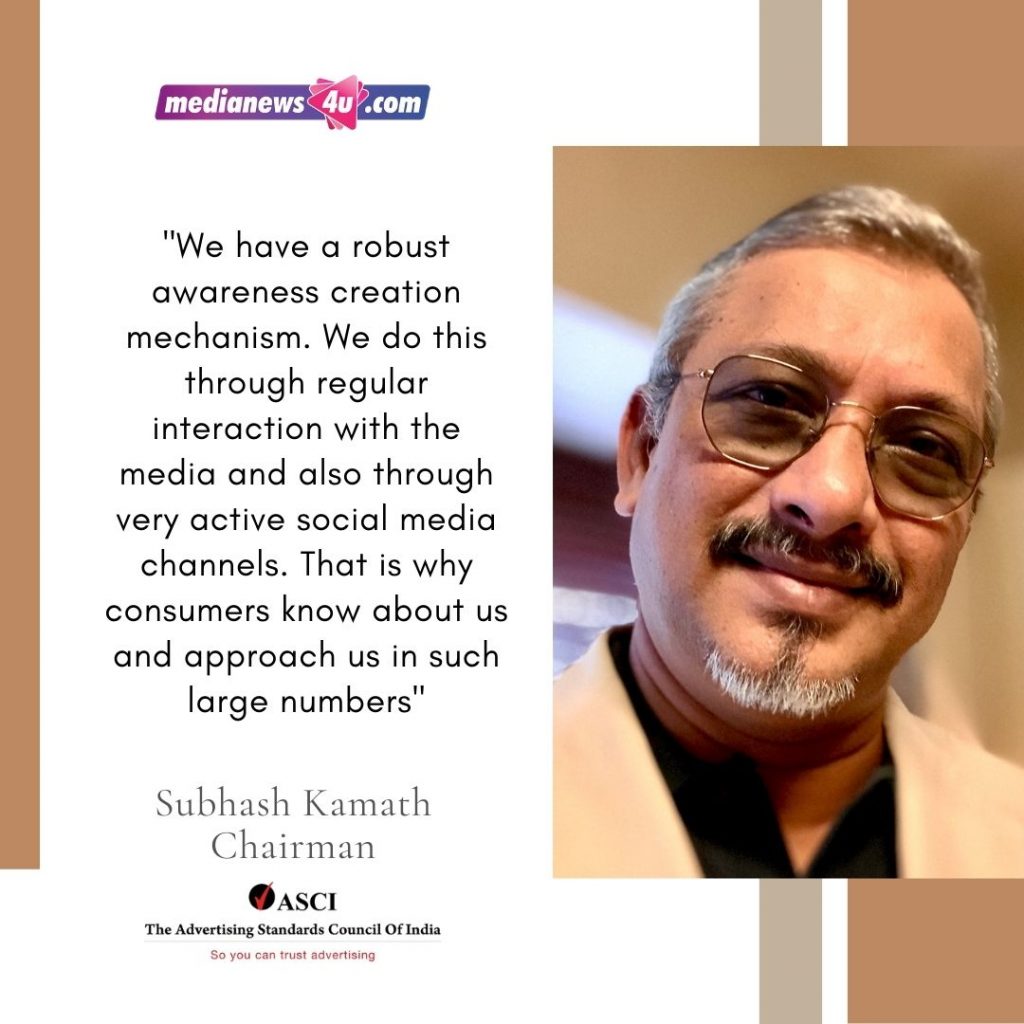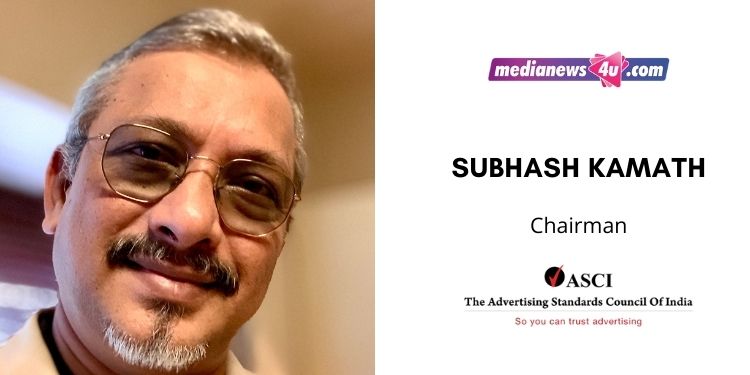The Advertsing Standards Council of India, popularly known as ASCI, last week announced Advertising Veteran and Chief Executive Officer at BBH & Publicis Worldwide, India, Subhash Kamath as the new Chairman of ASCI the year 2020-2021. Kamath took over the reigns from SPNI’s Rohit Gupta
ASCI in the past one year has acted upon complaints pertaining to a total of 3,773 advertisements. Under Rohit Gupta’s leadership ASCI also signed up with TAM to monitor 3,000 digital portals for misleading claims.
ASCI’s new top boss, Subhash Kamath spoke exclusively to Medianews4u on his plans for ASCI and the way forward.
Edited Excerpts.
While the advertising, marketing and the media industry is very well aware about ASCI and its doings, how are you going to create awareness about the great work in the audiences and the common people?
We already have a robust awareness creation mechanism. We do this through regular interaction with the media and also through very active social media channels. That is why consumers know about us and approach us in such large numbers.

What are your thoughts on how will the recent expansion of ad monitoring to 3,000 digital platforms for misleading claims help and benefit ASCI?
It strengthens our monitoring and was needed for this digital age. With this, we now cover 80% of India’s media spend. All this ensures more safeguards for the consumer and strengthens our position as a self-regulatory body. We believe in self-regulation and this is just one of the ways in which it delivers.

What are some of the key areas that you would focus as the ASCI Chairman, any top three-four areas, and why?
We must continue to build on our past milestones, as well as work hard to take our work to the next level. Collaborations across different stakeholders, making ourselves technologically savvier, will be some key objectives so that we are able to address the opportunities of the future stronger and better.
In terms of the regulatory context, we have a new consumer protection law and the Central Consumer Protection Authority. Therefore, the context in which ASCI functions has also been transformed. All this makes it imperative for us to think hard about codes, guidelines, regulations, etc.

We will build on our past work. The question is what should we do to take this work to the next level?
I’d love to see the Consumer Complaints Council and board members working more closely together. The intellectual debate that would follow would raise the quality of decisions and the standards of internal working.
How has the advertising landscape and the various complaints changed during the pandemic?
Media consumption patterns have changed significantly. With newspapers, for example, not being circulated for the longest time, the audience shift to digital was accelerated. This was one of the reasons we instituted digital monitoring. There were many ads that claimed cures or preventions for COVID-19 and we went into overdrive to identify those and act against them. The Ministry of AYUSH sought our help in this and we were very happy to join hands with it.
At this point of the time, what are some of the main challenges that ASCI continues to face at an industry/govt level? How do you plan to overcome them?
I don’t see any challenges. We have, over the years, had very successful partnerships with government departments. Through a MoU with the Department of Consumer Affairs, we worked together on the GAMA initiative that yielded around 15,000 complaints processed over the past five years. We had similar MoUs with the FSSAI and Ministry of AYUSH. The Ministry of Information and Broadcasting sends us all the complaints they receive about TV ads because the Cable TV Act’s code requires that no ad that violates ASCI code can be screened. Even State FDAs send complaints to ASCI for processing.

















